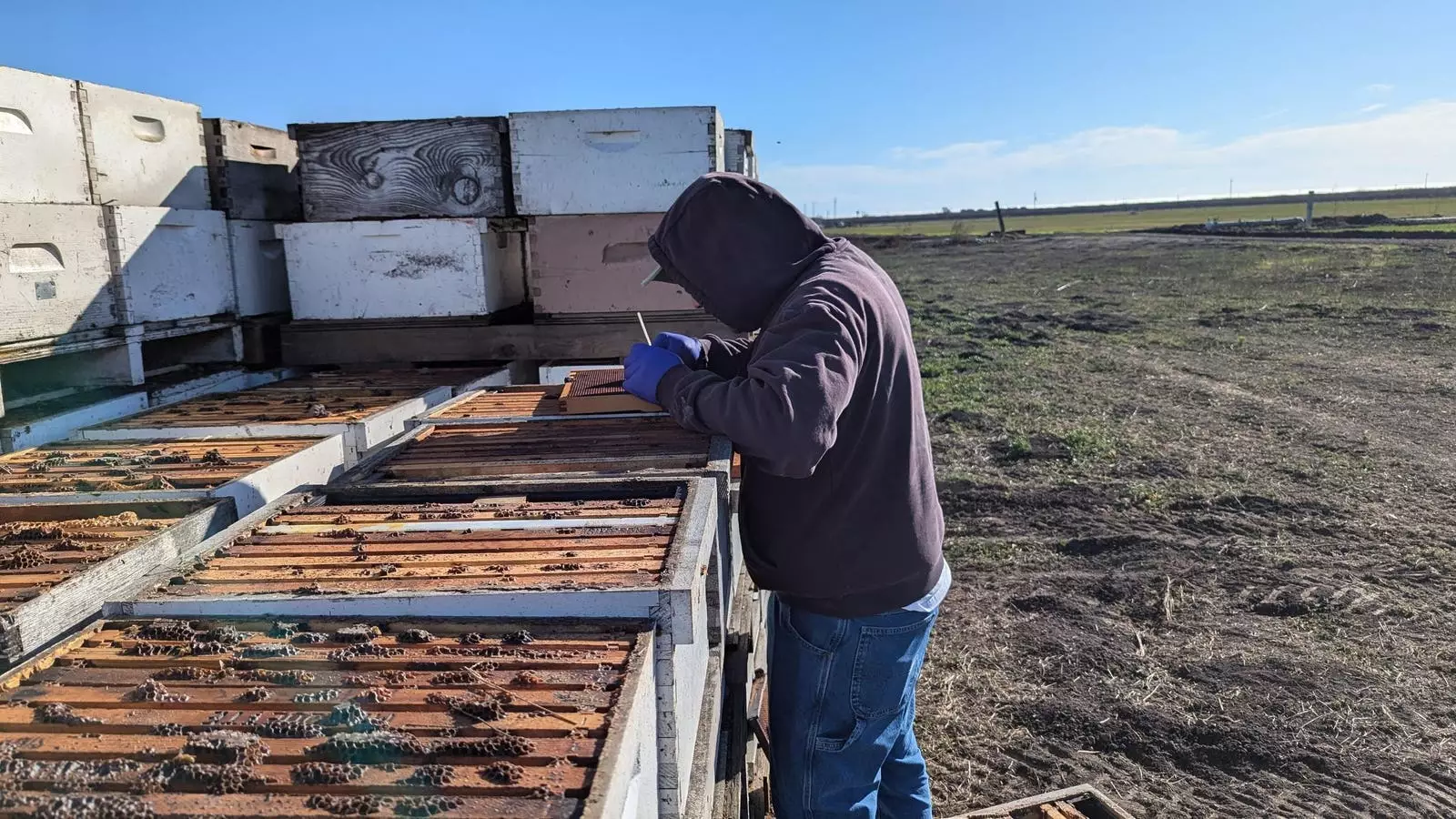The recent data revealing a shocking die-off of honeybees this past winter underscores a deepening crisis within the agricultural and ecological landscape of the United States. Reports indicate that millions of bees have perished, resulting in losses surpassing 50% of bee populations in various operations, with financial impacts exceeding $139 million. This information was brought to light in a recent survey conducted by beekeeping industry associations, which gathered insights from 234 beekeepers. As the California almond season approaches—a period requiring the mobilization of approximately 3 million honeybee colonies for pollination—an urgent sense of alarm within the beekeeping community becomes all the more pronounced.
Daniel Downey, executive director of Project Apis m, articulated the prevailing sense of panic enveloping the industry, as beekeepers opened their operations only to discover significant mortality rates among their colonies. Investigations have started, but with no clear explanation for these drastic declines, many are left wondering about the immediate and long-term implications for agricultural practices reliant on bees for pollination. This situation is dire not only for the beekeepers themselves, some of whom may face closure, but also for fruit growers who depend on bee populations for the successful fertilization of crops such as blueberries, cherries, cranberries, and apples.
Increases in crop prices and potential shortages of these fruits are imminent consequences of this bee crisis, which has rippling effects felt through grocery store shelves. The scale of loss experienced this year is alarming, with some beekeepers reporting mortality rates of up to 100%, raising critical concerns about the sustainability of honeybee farming as a viable and dependable industry.
The current situation bears chilling similarities to the infamous Colony Collapse Disorder (CCD) that shocked the beekeeping world in the late 2000s. Observations from recent colony inspections have shown that entire hives have succumbed, often with ample honey supplies remaining. Rather disquietingly, these casualties feature small patches of eggs and larvae, while adult bees are conspicuously absent. Blake Shook, a commercial beekeeper in Leonard, Texas, notes that the industry has already entered a phase of elevated mortality rates, with initial losses starting out at concerning levels, instead of a historical 15% average.
Research organizations, including USDA’s Bee Research Laboratory, have confirmed that the current losses are widespread and severe, but the root causes remain elusive. Traditional culprits such as the varroa mite—a notorious parasite known to ravage bee colonies—do not appear to explain the heightened mortality rates. Ongoing studies are being initiated to investigate the presence of viruses, parasites, and potential chemical residues in efforts to identify the contributors to this crisis.
In addition to an overwhelming decline in colony health, bee keepers face numerous challenges that threaten their livelihoods. The relentless pressure from competing foreign honey products, which account for a significant share of the U.S. honey market, adds further strain to domestic operations. Tim Hollmann, a seasoned beekeeper, articulated the difficulties of navigating low prices driven by external competition, which hinder the financial recovery of those who remain in the business.
While beekeepers grapple with these existing pressures, the sudden drop in bee populations is generating desperation among them. Reports of hive thefts have surged dramatically, climbing by 87% in California since 2013, which highlights not just the stakes involved but also the ethical dilemmas faced in an increasingly desperate market. Initiatives are underway to combat this problem as stakeholders recognize the urgent need for a cooperative approach to secure their assets while ensuring the legacy and future of beekeeping isn’t compromised further.
As the need for pollination draws closer, the disappearance of such a significant number of honeybees poses vital questions about agricultural sustainability and environmental health. The synergistic relationship between bees and the production of crops underscores their critical role in food security. A collective effort is required from researchers, industry leaders, and environmental advocates to identify the causes of these bee losses and formulate protective measures.
Without such interventions, the future of honeybees and, by extension, the agricultural systems that rely on them hangs in the balance. As downtowns bustle and supermarkets fill their shelves, it is vital that society recognizes the silent crisis unfolding in the natural world—a crisis that can no longer remain unnoticed.


Leave a Reply